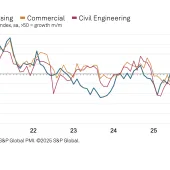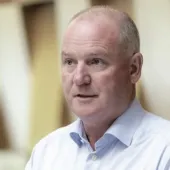
Construction product manufacturers to increase investment in e-commerce following COVID-19
CONSTRUCTION product manufacturers have signalled a shift in their investment intentions towards e-commerce sales as they respond to their worst quarterly performance since the 2008/09 recession.
The poor performance for product manufacturers in the second quarter of this year comes against a backdrop of construction site closures, manufacturing shutdowns and widespread economic uncertainty in response to the public health measures implemented on 23 March.
The Construction Products Association’s State of Trade Survey for the second quarter of 2020 reports that 81% of heavy-side manufacturers reported a fall in sales compared with the first quarter, whilst sales of light-side products were reported to have decreased by 68% of manufacturers. Both were the lowest balances since the fourth quarter of 2008.
Manufacturers expect the recovery to cautiously begin in the third quarter of 2020, with 13% of heavy-side firms and 9% of light side firms anticipating a rise in sales in the next quarter.
Moreover, investment intentions signal that the sudden change in trading conditions has elicited a broader change in manufacturers’ priorities, with 53% of heavy-side producers and 50% of those on the light side anticipating increased investment in e-commerce over the next year, in contrast to expectations of reducing investment in structures, such as new factories.
Rebecca Larkin, senior economist at the Construction Products Association, said: ‘As we emerge from an unprecedented economic shutdown, the extent of its impact on construction and construction product manufacturing is now clear in the sharp decline in sales in the second quarter.
‘Within the quarter it’s likely to have been a tale of two halves, with manufacturing lines closing in response to pauses in site activity in April and early May, followed by a phased restart as construction gradually resumed from mid-May.
‘Uncertainty over the economy, the appetite for new project starts and potential longer-term structural changes in demand mean that industry’s questions now move away from the question of how low can it go, to how quickly it can come back.’









